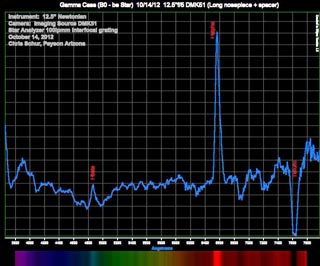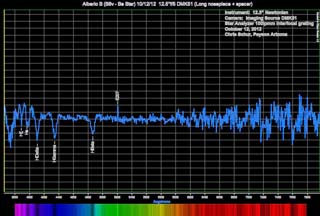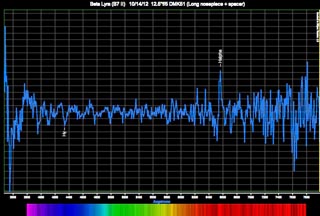|
An interesting
subclass of the B type stars is known as the Be Stars. The spectrum
of these stars has at one time or another an emission component,
usually in the hydrogen lines. The star Gamma Cassiopeia was
the first of these emission stars discovered using visual spectroscopes
over a century ago in 1866, and is considered an excellent starting
point for exploring this type of object.
Today, most astronomers
agree that this is rapidly rotating giant star, which has thrown
off its outer hydrogen atmosphere, orbiting at a close range.
The UV from the B star then ionizes this hydrogen and causes
its excitation, and dust in the gaseous envelope also reveals
polarization in its dust particles.
Be stars are also
variable in light output, some with smaller companion stars that
loop through the gas torus cause periodic outbursts in the emission
lines. Even the Hubble space telescope cannot clearly see these
tiny dust and gas envelopes around Be stars. The fact that we
can record their presence and measure their velocities with amateur
instruments is quite extraordinary!
I will be starting
with a few of the brighter and more easily spectrally resolved
stars, then adding fainter or more exotic examples later. All
spectra here are normalized to the calibrated continuum data.
Click
to enlarge to full 1024 size:
 Gamma Cass
B0 IVevar
Gamma Cass
B0 IVevar
|
 Alberio B
B8 Ve
Alberio B
B8 Ve
|
 Beta Lyra
B8 II
Beta Lyra
B8 II
|
|
|
|